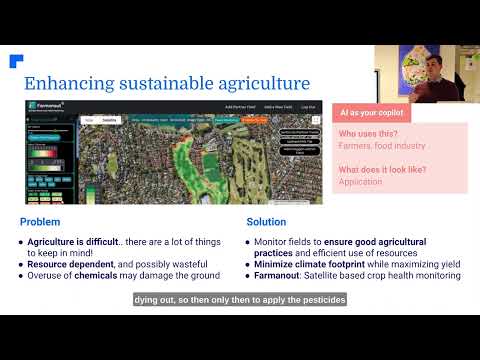Federal Workers Fight Back: Court Orders Reinstatement Amid Government Job Terminations in Washington
“Recent court rulings ordered reinstatement of thousands of federal workers, impacting multiple government agencies and probationary employees.”
“Recent court rulings ordered reinstatement of thousands of federal workers, impacting multiple government agencies and probationary employees.”
In a landmark development that has sent shockwaves through the federal government, recent court rulings have mandated the reinstatement of thousands of federal workers who were terminated across multiple government agencies. This judicial intervention deals a significant blow to the administration’s efforts to reduce the size of the civil service, particularly impacting probationary employees who typically lack full job protections. As we delve into this complex situation, we’ll explore the implications for federal workers, the government’s response, and the broader impact on public service employment.
The Court Rulings: A Turning Point for Federal Employees
The recent court decisions have brought to light potential violations in the government’s approach to efficiency and workforce management. Two federal judges, one in California and another in Maryland, have issued orders that could reshape the landscape of federal employment. Let’s break down these rulings and their immediate consequences:
- California Ruling: A federal judge ordered the reinstatement of thousands of probationary employees fired from six major departments, including Veterans Affairs, Defense, Energy, Interior, Agriculture, and Treasury.
- Maryland Ruling: In a more extensive decision, another federal judge mandated the temporary reinstatement of tens of thousands of fired probationary employees across 12 departments and several agencies throughout the federal government.
These rulings have exposed a critical flaw in the administration’s justification for terminating these workers. Despite claims of performance-based dismissals, many affected employees report having received excellent reviews, raising questions about the true motives behind these terminations.

The Human Cost: Stories from Affected Federal Workers
Behind the headlines and court orders are real people whose lives have been upended by these terminations. Let’s look at some of their stories:
- Frank Zhu: Fired from the Department of Housing and Urban Development in Chicago, Zhu expresses skepticism about the administration’s willingness to comply with court orders.
- Nathan Teich: An ecologist with the Bureau of Land Management, Teich’s termination forced him to become a stay-at-home dad, drastically altering his family’s plans.
- Eva Christensen: A Washington, D.C.-based agricultural science adviser, Christensen questions the logistical challenges and costs associated with reinstating thousands of employees.
- Rachel Spaeth: A research horticulturalist with the Agricultural Research Service, Spaeth highlights the irony in the administration’s claims of efficiency.
These personal accounts underscore the real-world impact of government decisions on federal workers and their families, challenging the notion of improved efficiency through mass terminations.
The Administration’s Response and Legal Challenges
The White House’s reaction to these court orders has been one of defiance. Press Secretary Karoline Leavitt stated, “A single judge is attempting to unconstitutionally seize the power of hiring and firing from the Executive Branch.” This stance signals the administration’s intention to challenge these rulings, potentially prolonging the uncertainty for affected workers.
Key points in the administration’s response include:
- Claims of executive authority over hiring and firing decisions
- Accusations of judicial overreach
- Promises to “immediately fight back” against the court orders
This confrontational approach sets the stage for a protracted legal battle, with the careers and livelihoods of thousands of federal workers hanging in the balance.
The Broader Impact on Federal Employment
The current situation raises significant questions about job security, career challenges, and the future of public service employment. As federal departments grapple with potential layoffs and efficiency measures, the path to reinstatement for affected workers remains unclear. This evolving situation underscores the complexities of federal employment law and the ongoing debate surrounding government worker performance and agency management practices.
Key issues at stake include:
- The role of probationary periods in federal employment
- The balance between executive authority and worker protections
- The definition and measurement of efficiency in government operations
- The long-term impact on recruitment and retention in federal service
“Judges’ decisions highlight potential violations in the government’s approach to efficiency, affecting workforce management across federal departments.”
The Department of Government Efficiency: A Closer Look
At the center of this controversy is the Department of Government Efficiency, touted by the administration as a key player in streamlining federal operations. However, critics argue that the department’s actions have been counterproductive, potentially costing taxpayers millions in legal fees and reinstatement processes.
Concerns about the department’s approach include:
- Lack of clear performance metrics for terminations
- Potential violations of civil service protections
- The cost-effectiveness of mass firings and potential reinstatements
As we navigate these complex issues, it’s crucial to consider innovative approaches to government efficiency that don’t compromise worker rights or service quality. In this context, technologies like those offered by Farmonaut for agricultural management could serve as models for data-driven decision-making in government operations.

Legal Implications and Worker Rights
The court rulings have brought federal employment law into sharp focus, particularly concerning the rights of probationary employees. While these workers typically have fewer protections than their tenured colleagues, the judges’ decisions suggest that even probationary periods are not exempt from legal scrutiny.
Key legal considerations include:
- The extent of executive authority in federal hiring and firing
- The role of performance evaluations in termination decisions
- The legal protections afforded to probationary employees
- The potential for class-action lawsuits from affected workers
As these legal battles unfold, they may set important precedents for federal employment law, potentially reshaping the relationship between government agencies and their employees.
The Road to Reinstatement: Challenges and Uncertainties
For the thousands of federal workers affected by these terminations, the path to reinstatement is fraught with uncertainty. Even with court orders in place, the process of returning to work is complex and potentially time-consuming. Agencies must grapple with logistical challenges, including:
- Reintegrating employees into existing work structures
- Addressing gaps in employment and potential training needs
- Managing the financial implications of back pay and benefits
- Reconciling reinstatements with ongoing efficiency initiatives
Moreover, the administration’s stated intention to challenge the court rulings adds another layer of complexity, potentially prolonging the limbo for affected workers.
The Impact on Government Services and Efficiency
While the administration has argued that these terminations were necessary for improving government efficiency, critics contend that the disruptions caused by mass firings and potential reinstatements may actually hinder effective governance. Key considerations include:
- The loss of institutional knowledge and expertise
- Disruptions to ongoing projects and services
- The cost and time associated with hiring and training replacements
- The potential impact on morale and productivity across federal agencies
As agencies navigate these challenges, there’s an opportunity to reevaluate approaches to efficiency and performance management. Technologies like those offered by Farmonaut’s API for agricultural data management demonstrate how data-driven solutions can enhance efficiency without resorting to mass terminations.
The Future of Federal Employment
This ongoing situation raises important questions about the future of federal employment and the attractiveness of public service careers. Key considerations for the future include:
- The need for clear, fair performance evaluation systems
- Balancing efficiency goals with worker protections
- Developing strategies to attract and retain top talent in government service
- Exploring innovative approaches to workforce management and efficiency
As we look to the future, it’s crucial to consider how technology and data-driven solutions can enhance government operations without compromising worker rights or service quality. Platforms like Farmonaut’s developer documentation offer insights into how advanced technologies can be integrated into complex systems for improved efficiency and decision-making.
Comparative Analysis: Federal Worker Reinstatement Status
| Agency Name | Number of Affected Employees | Court Order Status | Agency Response |
|---|---|---|---|
| Department of Veterans Affairs | Estimated 5,000 | Reinstatement Ordered | Awaiting Further Direction |
| Department of Defense | Estimated 8,000 | Reinstatement Ordered | Challenging Court Order |
| Department of Energy | Estimated 3,000 | Reinstatement Ordered | Preparing Compliance Plan |
| Department of the Interior | Estimated 4,000 | Reinstatement Ordered | Reviewing Legal Options |
| Department of Agriculture | Estimated 6,000 | Reinstatement Ordered | Initiating Phased Return |
| Department of the Treasury | Estimated 7,000 | Reinstatement Ordered | Conducting Internal Assessment |
This table provides a snapshot of the current situation across various federal agencies, highlighting the scale of the issue and the varied responses from different departments. It’s important to note that these figures are estimates and the situation remains fluid as agencies navigate the court orders and potential appeals.
Lessons from the Private Sector
As the federal government grapples with these challenges, there may be valuable lessons to be learned from the private sector, particularly in industries that have successfully navigated large-scale organizational changes. For instance, the agricultural technology sector, exemplified by companies like Farmonaut, demonstrates how data-driven approaches can enhance efficiency and productivity without resorting to mass layoffs.
Key takeaways from the private sector include:
- Emphasis on continuous performance evaluation and feedback
- Investment in employee training and development
- Utilization of technology to streamline operations
- Focus on clear communication and transparency in organizational changes
By incorporating these principles, federal agencies might be able to achieve their efficiency goals while maintaining a stable and motivated workforce.
The Role of Technology in Government Efficiency
As we consider the future of federal employment and government efficiency, it’s crucial to explore how technology can play a role in enhancing operations without necessitating large-scale workforce reductions. Innovative solutions, such as those offered by Farmonaut in the agricultural sector, demonstrate the potential for technology to drive efficiency and productivity.
Key technological considerations for government agencies include:
- Implementing data-driven decision-making processes
- Utilizing AI and machine learning for workflow optimization
- Enhancing inter-agency communication and collaboration through digital platforms
- Leveraging remote work technologies to increase flexibility and reduce overhead costs
By embracing these technological advancements, federal agencies can work towards achieving their efficiency goals while preserving their workforce and improving service delivery.
Public Perception and Trust in Government
The ongoing situation with federal worker terminations and court-ordered reinstatements has potential implications for public perception and trust in government institutions. As citizens observe the legal battles and contradictory statements from various officials, there’s a risk of eroding confidence in the government’s ability to manage its workforce effectively and provide consistent public services.
Key factors affecting public perception include:
- Transparency (or lack thereof) in decision-making processes
- Consistency of messaging from government officials
- The perceived impact on government services and efficiency
- Media coverage and public discourse surrounding the issue
To address these concerns, it’s crucial for government agencies to prioritize clear communication, demonstrate a commitment to fair employment practices, and showcase tangible improvements in efficiency and service delivery.
Looking Ahead: The Future of Federal Employment
As we look to the future, it’s clear that the landscape of federal employment is likely to undergo significant changes. The current situation serves as a catalyst for reevaluating long-standing practices and exploring innovative approaches to workforce management in the public sector.
Key areas for future focus include:
- Developing more robust and fair performance evaluation systems
- Exploring flexible employment models that balance efficiency with job security
- Investing in ongoing training and skill development for federal workers
- Leveraging technology to enhance productivity and service delivery
- Strengthening legal protections for federal workers while maintaining managerial flexibility
By addressing these areas, the federal government can work towards creating a more efficient, effective, and equitable work environment for its employees while improving its ability to serve the public.
Conclusion: Navigating Uncertainty in Federal Employment
The recent court rulings ordering the reinstatement of thousands of federal workers have brought to light significant challenges in government workforce management. As agencies grapple with the implications of these decisions and the administration signals its intent to challenge them, affected workers face an uncertain future.
This situation underscores the complex interplay between efforts to improve government efficiency and the rights and protections afforded to federal employees. It also highlights the need for a more nuanced approach to workforce management that balances operational needs with fair employment practices.
As this story continues to unfold, it will be crucial for all stakeholders – government officials, legal experts, labor representatives, and the affected workers themselves – to engage in constructive dialogue aimed at finding sustainable solutions. The outcome of this situation will likely have far-reaching implications for the future of federal employment, government efficiency, and public service delivery in the United States.
In navigating these challenges, there may be valuable lessons to be learned from innovative sectors like agricultural technology. Companies like Farmonaut demonstrate how data-driven approaches and advanced technologies can enhance efficiency and productivity without compromising workforce stability. As the federal government charts its course forward, embracing such innovative approaches could be key to achieving its goals while maintaining a robust and motivated civil service.
FAQ Section
- Q: What prompted the recent court rulings on federal worker reinstatements?
A: The rulings came in response to legal challenges against mass terminations of probationary federal employees across multiple agencies, which judges found potentially violated proper procedures and worker rights. - Q: How many federal workers are affected by these court orders?
A: While exact numbers vary, the rulings potentially impact tens of thousands of federal workers across at least 12 departments and several agencies. - Q: What is the administration’s stance on these court rulings?
A: The administration has expressed opposition to the rulings, claiming they infringe on executive authority, and has signaled intentions to challenge the decisions. - Q: What are the main challenges in reinstating terminated federal workers?
A: Challenges include logistical issues of reintegration, addressing employment gaps, potential training needs, and managing the financial implications of back pay and benefits. - Q: How might this situation impact future federal employment practices?
A: This could lead to reevaluation of probationary periods, performance evaluation systems, and the balance between efficiency measures and worker protections in federal agencies.
Earn With Farmonaut: Affiliate Program
Earn 20% recurring commission with Farmonaut’s affiliate program by sharing your promo code and helping farmers save 10%. Onboard 10 Elite farmers monthly to earn a minimum of $148,000 annually—start now and grow your income!
Access Farmonaut’s Innovative Agricultural Solutions
While we navigate the complexities of federal employment, it’s worth noting how innovative technologies are reshaping other sectors. Farmonaut offers cutting-edge solutions for agricultural management that demonstrate the potential of data-driven approaches in enhancing efficiency and productivity.
Explore Farmonaut’s offerings:
As we continue to monitor the developments in federal employment and government efficiency measures, it’s clear that innovative approaches and technologies will play a crucial role in shaping the future of work across all sectors.








